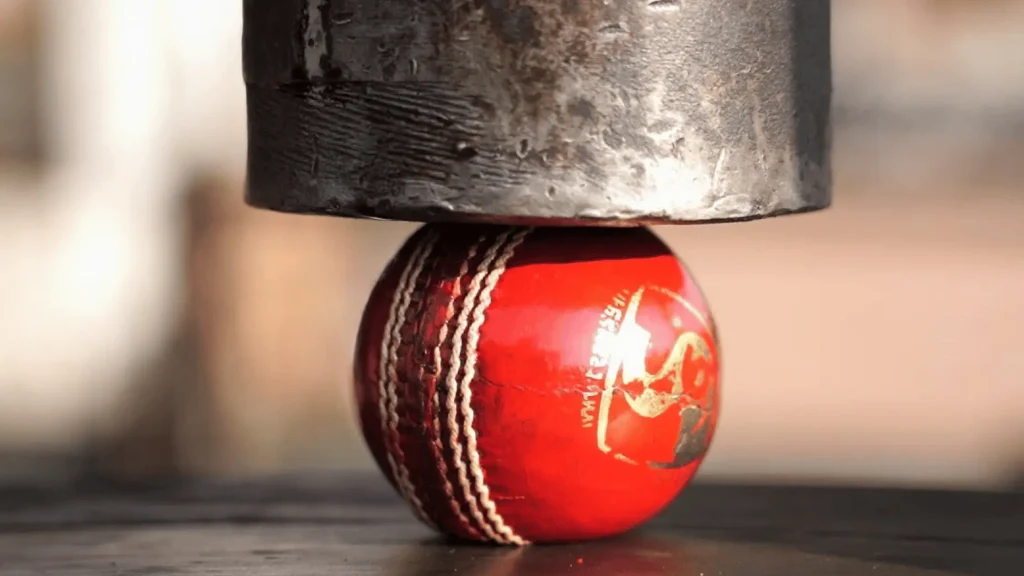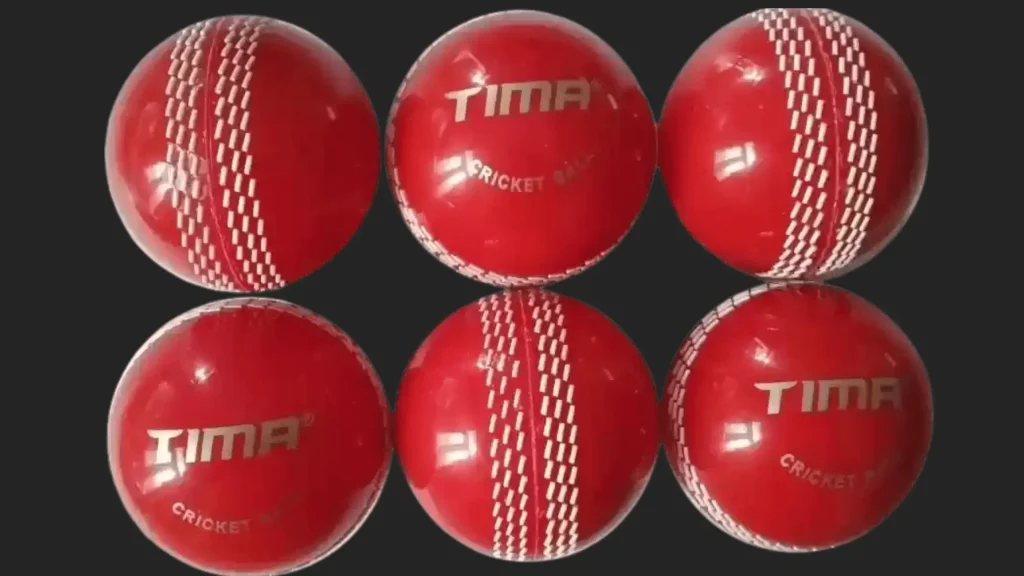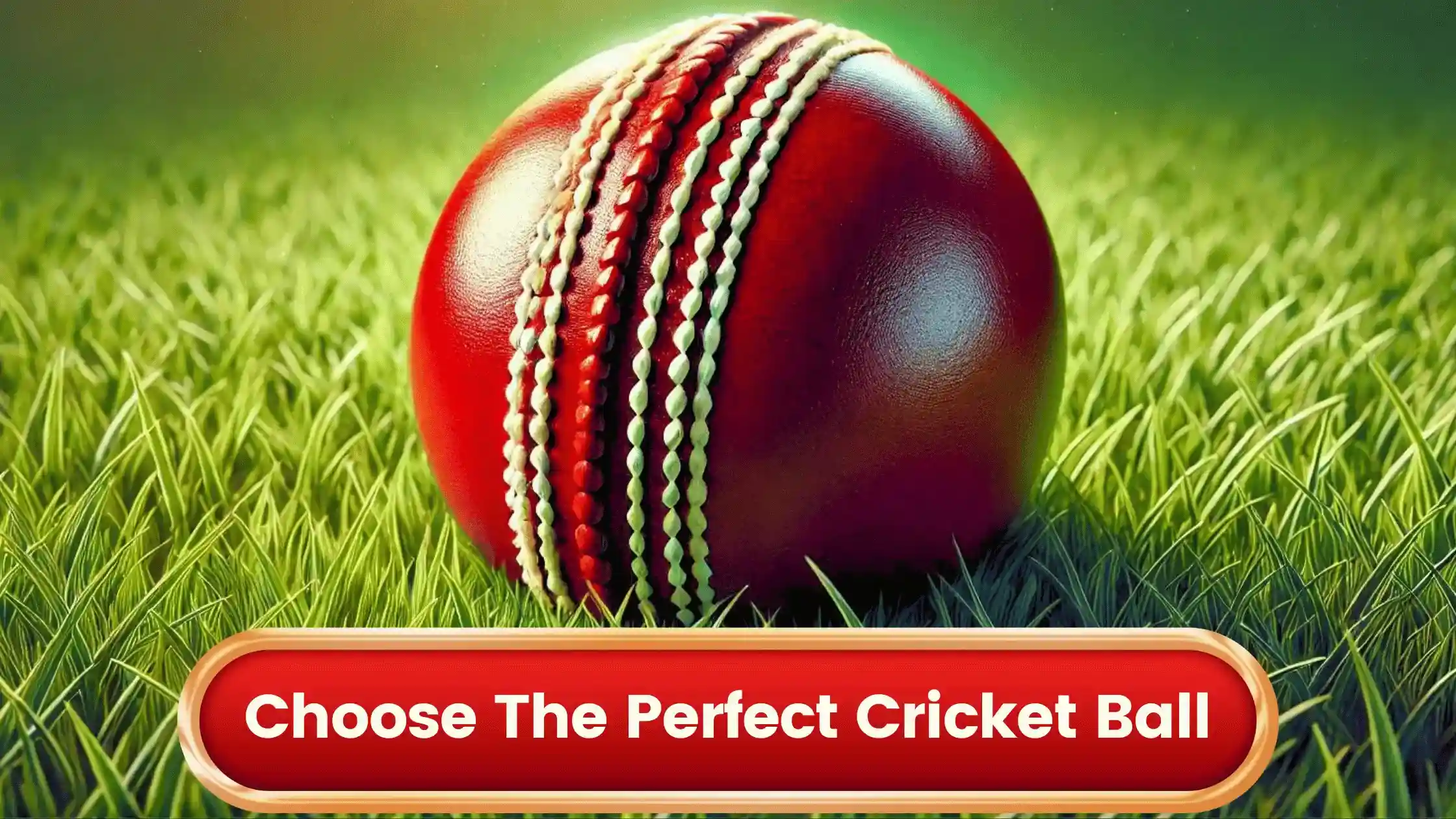In the sport of cricket the cricket ball crucially shapes the nature of both batting and bowling. Selection of ball materials can change with the format and location. C. balls vary in composition size design and provide distinct advantages for better play. By recognizing the different C. balls on the market such as synthetic training balls and professional-grade leather balls players and coaches can find what they need.
Types of Cricket Balls
Leather Cricket Balls
Leather has been chosen by the leading cricket leagues for use in Test and ODIs as the standard. Produced with a cork core and tightly bound in string with leather secured by artisanal stitching techniques. They ensure dependable bounce and twist that help in successful play for competitivecricket matches. Due to their toughness these leather balls last over a long time and remain effective in all kinds of weather.

Synthetic Cricket Balls
In practice and smaller matches synthetic cricket balls often take center stage. Designers craft these balls to resemble leather balls’ properties but typically choose to create them softer and more economical. Synthetic balls are perfect for training due to their ability to lower risk of injuries in fielding and batting activities even as they deliver similar results. For indoor matches of cricket smoother balls help protect equipment and reduce the risk of player harm.

Indoor Cricket Balls
For indoor cricket games you must use balls tailored to be lighter and more yielding than usual leather or synthetic ones. The nature of these balls is crafted for the faster movement in indoor play and assist with delivering balls with accuracy. Made from either leather or synthetic materials indoor cricket balls are crafted to lessen injury risks while creating a similar experience to open-air cricket.
Also Read: 6 ball 6 six record list: The Legendary Six-Hitters
Specialized Cricket Balls
C. balls have been crafted for use in coaching and on indoor courts. Below is a table that outlines some of the most popular options and their uses:
| Type of Ball | Description |
| Annafi Dual Color Cricket Coaching Balls | Designed to improve visibility these balls excel for coaching sessions and skill enhancement. |
| Gravity TM C. Ball | A grade A ball perfect for any type of training involved in amateur and professional settings. Durable and reliable. |
| Senior Indoor C. Ball | Designed for older players in indoor activities with reliable bounce and coordination. |
| Annafi India C. Ball | Due to its outstanding durability and craftsmanship this ball enjoys great esteem among players in India. |
| CW Indoor C. Balls (Pack of 12) | A box of 12 balls made from leather ideal for groups and academies that require additional balls. |
| PVC Synthetic C. Ball | A synthetic ball crafted for synthetic materials that delivers resilience and convenience of use. |
| Soft Center PVC C. Ball (Flipkart) | At Flipkart you can find a soft synthetic ball that works well for both training and indoor games. |
For further details See the video:
Importance of Choosing the Right Ball
For players wishing to elevate their performance the selection of a C. ball plays an important role. To excel in either match play or practice the ball must accommodate the player’s abilities and the game structure. Annafi’s dual colored cricket coaching balls perform well in training because they help players concentrate on following the movement of the ball. With its solid design and performances the Gravity TM C. ball stands out for drills and match practice.
Suitable for indoor games with adequate weight and bounce is the senior version of the indoor C. ball. For clubs and teams requiring multiple balls for regular practice the CW indoor C. balls set of 12 represents a cost-efficient option.
Recommended Combinations
Choosing correct bat and ball can boost the performance of the player. Below is a table with suggested bat and ball combinations for different scenarios:
| Bat Type | Recommended Ball |
| SS Master Kashmir Willow Leather Ball Bat | Optimal for being combined with superior hide balls for game and drills. |
| Training Bats | Right for use with synthetic or practice balls like the Annafi Dual Color C. Balls. |
Also Read: Cricket Bat Selection: A Comprehensive and Ultimate Guide
Buying Cricket Balls in India
A number of good quality C. balls are available for sale in India to the interested players. Most local players tend to prefer the Annafi India C. ball. The said item is known for its durability and effective results under different field conditions. This ball is easily available from the Annafi India site which has various balls meant for different styles and levels of play.
In India cricket players can get the soft center PVC balls on Flipkart They manufacture the ball with a soft inner core to be used in training and light games indoors. It has a reasonable performance that enables the users to train safely with minimum impact risk.
Benefits of Using Synthetic and Leather Cricket Balls
With regard to usage, both synthetic and leather baseballs provide their own advantages. The sports event being organized is a league in which only leather Annafi India C. balls are acceptable. In addition, these provide better swing and spin along with great durability which makes their need for international as well as domestic cricket.
Synthetic balls rather than traditional leather C. balls have advantage during leisure games practice and indoor play. Such balls being cheaper and softer are more efficient than leather balls in areas where concern for safety and cost is a priority. Synthetic balls are effective on artificial surfaces and in unconventional sports facilities.
Cricket Ball Weight in grams and ounces
Game Dynamics dependent on A certain weight of a cricket ball. The weight of the ball according to official regulations is between 5.5 and 5.75 ounces (155.9 to 163 grams) for men in cricket. The weight of women’s cricket sits between 140 and 151 grams; 4.94 and 5.31 ounces respectively. Bowlers, depending on the weight of the ball, are able to swing, seam or spin it — and both they and the batsman are affected by the ball’s weight. This ensures you maintain the right weight across matches making it fairer.
For Details See the video:
Cricket Ball Price
The quality and brand, of course, vary in price of a ball. The most popular type of balls in official matches are leather balls, which are used in professional matches can go from $10 to $100 or more value, according to the brand. Tennis balls, encountered in casual matches, are cheap as hell, at usually $1-5 per ball. The ball used depends on what level of play and type of cricket being played — lower end balls may offer more durability but perform less well than higher end balls.
Conclusion
Throughout cricket the ball serves an important purpose and is available in different styles for specific wants. You will discover diverse types of balls intended for professional play or to ideal training situations. Both the Annafi dual color cricket coaching balls and the Gravity TM C. ball plus the senior indoor C. ball serve multiple purposes to cover differing needs and choices for every athlete’s equipment. Sportspeople can select the finest tools to refine their talents and appreciate their play by searching on the Annafi India site or looking for the soft center PVC ball on Flipkart.
Also Read: Cricket Bats: Everything You Need to Know about cricket bats
FAQs
What is the ball in cricket called?
In cricket the ball is called a cricket ball only nothing else.
How hard is a cricket ball?
C. Ball is very much hard with a solid cork core covered with a hard leather.
What is cricket ball weight?
A cricket ball weight is between 5.5 to 5.75 ounces (156 to 163 grams) for mens.

